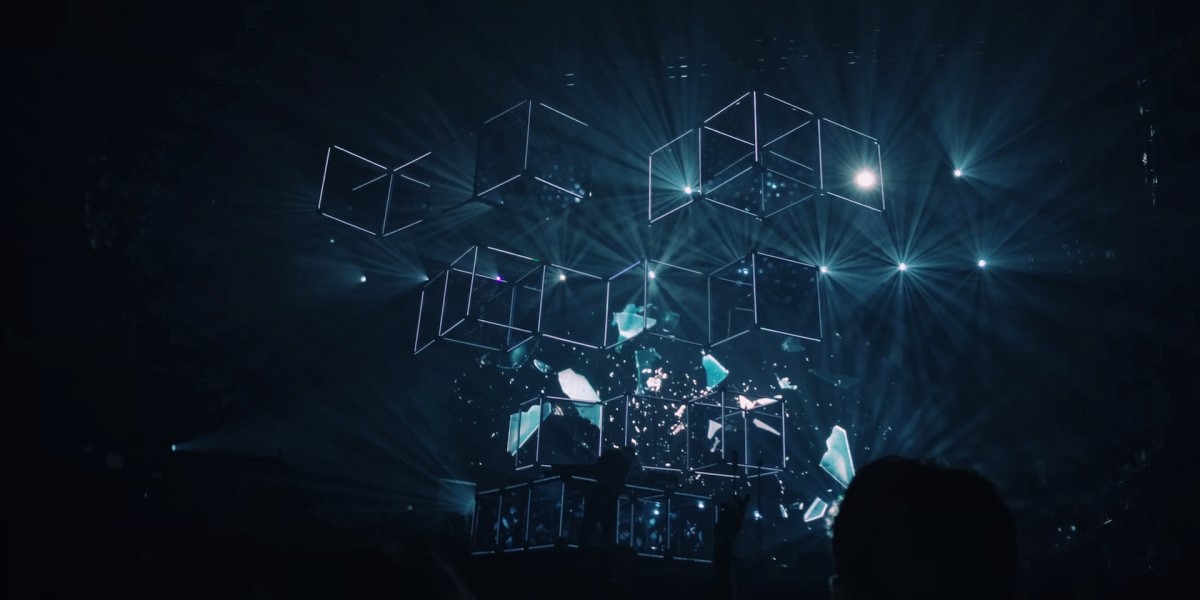This article was first published on DATA CENTER FRONTIER and written by RICH MILLER.
Many data center operators are ditching “security by obscurity” and adding signage, logos and branding to their buildings. This shift reflects the benefits of campuses as well as a growing focus on community engagement and brand awareness.
The data center industry is no longer hiding its marquee buildings, as companies increasingly prioritize branding and community engagement.
In the early years of the Internet industry, one of the biggest search challenges was finding a data center for a site visit. The facilities were typically located in industrial parks, blending in with the surrounding warehouses.
In those days, data centers wanted to remain as anonymous as possible and had little or no exterior signage. This was part of a practice known as “security by obscurity,” in which data centers sought to avoid attention to bolster customer concerns about security.
Things have changed a lot. In 2023, many new data center campuses have large signs touting their presence and their brand. Why the change? There are three factors driving this trend:
- Data center operators have gained more control over physical security with the development of secure, purpose-built cloud campuses with extraordinary access control.
- Data center companies now place a priority on becoming part of the community where they operate, and boosting their engagement and visibility.
- Growing competition has created a more crowded marketplace, making name recognition more important than ever.
Branding Matters in Data Center Alley
Nowhere is this trend more visible than in Data Center Alley in Ashburn, Virginia, which is home to the world’s largest cluster of cloud computing infrastructure.
QTS Data Centers has a large sign at the entrance to its new campus off Loudoun County Parkway, which is the first building many motorists see when they exit the Dulles Greenway. The data centers feature a red-and-white façade with lots of windows and prominent logos.
It’s part of an industry shift to add visual appeal to data centers, replacing the gray concrete bunkers seen in the early years of the Internet. The focus on design is a response to demand from neighbors and public officials to make the buildings more attractive. More buildings have included glass facades and exterior landscaping, as well as signs identifying the corporate owners.
The importance of signage in the Ashburn market became clear last year when Equinix asked Loudoun County for permission to boost the size of the signage on its newest data center, DC21, citing a desire to “to further establish global corporate branding on Equinix structures.”
The request was notable, as Equinix has a history of not including logos or signage on its data centers, including all of its facilities in Ashburn. But the company saw a unique opportunity with the location of DC21 at the corner of Waxpool and Loudoun County Parkway, the crossroads of Data Center Alley. The new Equinix facility sits across the intersection from massive data centers from rivals Digital Realty and CloudHQ.
“This corner is important to Equinix,” the company said in seeking signs on its building as large as 188 square feet, compared to the standard 63 square feet. The company and county agreed on two signs, each 100 square feet, citing the size of the structure and its distance from the road.
Equinix has since gained approval to add decorative lighting to DC21, using upward-facing LED lights to bathe its facade with colors to reflect holidays and seasonal themes – red, white and blue for the Fourth of July, green for St. Patrick’s Day and pink for Valentine’s Day and Breast Cancer Awareness month, for example.
In its filing, Equinix said the display will “bring a more diverse visibility and positive exposure of data centers within the community, creating a landmark at the entrance to Data Center Alley.”
Engaging With the Community
The new focus on signage is related to the evolution of data center campuses. Strong demand from hyperscale operators has driven a super-sizing of data centers, creating large-scale cloud campuses that provide enough land and power for years of growth.
These larger campuses are designed for security, controlling access using manned gates, perimeter fencing, deep setbacks and active monitoring by security cameras – in addition to the usual multi-layered “defense in depth” security measures to control who can enter data center buildings and technical space.
With the addition of these extra layers of physical security, many data center operators have become comfortable with displaying logos on their buildings.
Another reason for data center signage is the desire to be more visible in the communities where do business. As QTS Data Centers pursues a major expansion, it is working to engage with residents on the benefits of data centers, as well as working with local officials on how these developments impact the environment and local resources like power and water.
CEO Chad Williams has appeared at town hall meetings in Northern Virginia to address questions from residents about their development plans. There’s likely more of that ahead, as parent Blackstone recently outlined plans to invest $8 billion in new QTS data center projects.
As more communities raise tough questions about data centers, the development process is changing. Data centers have a history of secrecy during site selection, including using codenames to hide their identity during the approval process, and seeking to avoid disclosing their use of power and water.
That no longer plays well with residents, who want to know more about what is being built, who is building it, and what it will mean for their neighborhoods. As a result, data center operators are adding signage and being more public about their community support, including community grants, and donations to local non-profits and services.
The Data Center Coalition has recently launched a campaign to boost public familiarity with data centers and highlight its community support efforts in Virginia.
Standing Out In A Crowd
Branding and name recognition are becoming more important considerations as the industry has grown, with many new data center platforms being launched by well-heeled private equity firms and infrastructure investors.
The huge influx of institutional capital into the digital infrastructure has altered a key competitive “moat” – the high cost of entry. Data center projects can cost hundreds of millions or even billions of dollars, which has historically limited the number of companies that can play in the space.
As cloud computing and AI have transformed IT infrastructure, the world’s largest investors are keenly focused on funding the digital transformation. New companies have emerged, and existing operators have been acquired by investors with deep pockets. This has created more competition, particularly in busy markets, where signage allows incumbents to boost their visibility and new players to announce their presence.
Brand awareness matters more than ever, and that will increasingly be the case as the industry continues its steady growth.
Rich Miller
This article was first published on DATA CENTER FRONTIER and written by RICH MILLER.





